China OEM Manufacturer
Shandong Renke Control Technology Co.,Ltd.is a leading environmental monitoring high technology enterprise in China.
Renke is engaged in industrial sensor, communication gateway, industrial data platform, cloud computing service,and measurement control technology solution. We have won good reputation for high quality products and sincere service.
Shandong Renke Control Technology Co.,Ltd.is a leading environmental monitoring high technology enterprise in China.
Renke is engaged in industrial sensor, communication gateway, industrial data platform, cloud computing service,and measurement control technology solution. We have won good reputation for high quality products and sincere service.
Aggiornamenti recenti
-
Purpose and Significance of Water Quality Monitoring
Water quality monitoring is the process of monitoring and measuring the types, concentrations, and trends of pollutants in water, and evaluating water quality. It plays a vital role in a variety of areas, including environmental protection, water resources management, and public health. The following are the main purposes and significance of water quality monitoring:
In summary, water quality monitoring plays a vital role in protecting the water environment, safeguarding human health, promoting the rational use of water resources, supporting environmental management and policy development, promoting scientific research and technological development, raising public awareness of environmental protection, assessing water quality, providing early warning of pollution, and regulating water treatment processes.
https://www.renkeer.com/home-water-quality-testing/Purpose and Significance of Water Quality Monitoring Water quality monitoring is the process of monitoring and measuring the types, concentrations, and trends of pollutants in water, and evaluating water quality. It plays a vital role in a variety of areas, including environmental protection, water resources management, and public health. The following are the main purposes and significance of water quality monitoring: In summary, water quality monitoring plays a vital role in protecting the water environment, safeguarding human health, promoting the rational use of water resources, supporting environmental management and policy development, promoting scientific research and technological development, raising public awareness of environmental protection, assessing water quality, providing early warning of pollution, and regulating water treatment processes. https://www.renkeer.com/home-water-quality-testing/ WWW.RENKEER.COMHome Water Quality Testing Without a KitFive simple tips to quickly judge tap water quality at home without professional water quality testing kits or complicated procedures.0 Commenti 0 condivisioni 825 Views 0 AnteprimaEffettua l'accesso per mettere mi piace, condividere e commentare!
WWW.RENKEER.COMHome Water Quality Testing Without a KitFive simple tips to quickly judge tap water quality at home without professional water quality testing kits or complicated procedures.0 Commenti 0 condivisioni 825 Views 0 AnteprimaEffettua l'accesso per mettere mi piace, condividere e commentare! -
Water Salinity
Definition
Water salinity refers to the content of dissolved salts in water, typically measured in grams of salt per kilogram of water (g/kg, or parts per thousand). Salinity is a key physical and chemical property of water, significantly impacting aquatic ecosystems, agricultural irrigation, industrial production, and human health.
https://www.renkeer.com/tds-conductivity-and-salinity-in-water-quality/Water Salinity Definition Water salinity refers to the content of dissolved salts in water, typically measured in grams of salt per kilogram of water (g/kg, or parts per thousand). Salinity is a key physical and chemical property of water, significantly impacting aquatic ecosystems, agricultural irrigation, industrial production, and human health. https://www.renkeer.com/tds-conductivity-and-salinity-in-water-quality/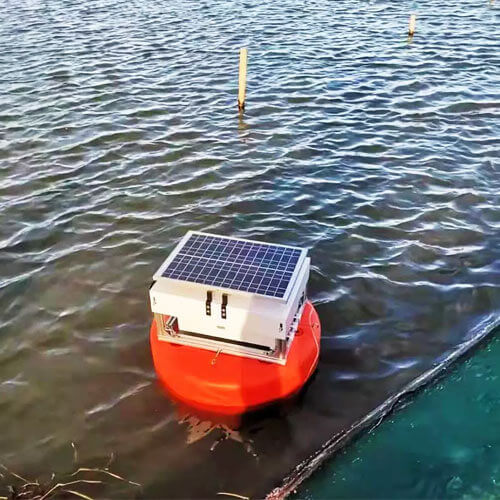 WWW.RENKEER.COMTDS, Conductivity and Salinity RelationshipTDS, EC, and salinity are interrelated: EC reflects ion concentration, TDS measures total dissolved solids, and salinity indicates total salt content.0 Commenti 0 condivisioni 815 Views 0 Anteprima
WWW.RENKEER.COMTDS, Conductivity and Salinity RelationshipTDS, EC, and salinity are interrelated: EC reflects ion concentration, TDS measures total dissolved solids, and salinity indicates total salt content.0 Commenti 0 condivisioni 815 Views 0 Anteprima -
The Role of Soil Microorganisms in pH Changes
Soil microorganisms play a vital role in soil ecosystems. They not only participate in nutrient cycling and organic matter transformation, but also influence soil physical and chemical properties, including pH changes, through a variety of biochemical and biophysical mechanisms. The following are specific roles of soil microorganisms in pH changes:
https://www.renkeer.com/soil-ph-effects-and-testing/The Role of Soil Microorganisms in pH Changes Soil microorganisms play a vital role in soil ecosystems. They not only participate in nutrient cycling and organic matter transformation, but also influence soil physical and chemical properties, including pH changes, through a variety of biochemical and biophysical mechanisms. The following are specific roles of soil microorganisms in pH changes: https://www.renkeer.com/soil-ph-effects-and-testing/ WWW.RENKEER.COMSoil pH: Effects and Testing MethodsSoil pH generally refers to the degree of soil acidity or alkalinity, range from 0 to 14. The pH range of 6.0-7.5 is suitable for the growth of most plants.0 Commenti 0 condivisioni 789 Views 0 Anteprima
WWW.RENKEER.COMSoil pH: Effects and Testing MethodsSoil pH generally refers to the degree of soil acidity or alkalinity, range from 0 to 14. The pH range of 6.0-7.5 is suitable for the growth of most plants.0 Commenti 0 condivisioni 789 Views 0 Anteprima -
Smart sensors, through their closed-loop "perception-analysis-decision-making" system, have reshaped the water quality monitoring model, providing technical support for water resource protection and pollution control. With the penetration of IoT and AI technologies, their application in smart water services and river basin management will further deepen, contributing to the refined and sustainable management of the water environment.
https://www.renkeer.com/home-water-quality-testing/Smart sensors, through their closed-loop "perception-analysis-decision-making" system, have reshaped the water quality monitoring model, providing technical support for water resource protection and pollution control. With the penetration of IoT and AI technologies, their application in smart water services and river basin management will further deepen, contributing to the refined and sustainable management of the water environment. https://www.renkeer.com/home-water-quality-testing/ WWW.RENKEER.COMHome Water Quality Testing Without a KitFive simple tips to quickly judge tap water quality at home without professional water quality testing kits or complicated procedures.0 Commenti 0 condivisioni 894 Views 0 Anteprima
WWW.RENKEER.COMHome Water Quality Testing Without a KitFive simple tips to quickly judge tap water quality at home without professional water quality testing kits or complicated procedures.0 Commenti 0 condivisioni 894 Views 0 Anteprima -
Soil monitoring involves scientifically testing and analyzing the physical, chemical, and biological properties of soil to assess its health. Key indicators monitored include soil moisture, temperature, pH, electrical conductivity (salinity), nutrients (such as nitrogen, phosphorus, and potassium), and pollutants (such as heavy metals and pesticide residues). This technology facilitates precise irrigation and fertilization, improving crop yields and quality while preventing soil degradation and pollution and ensuring agricultural product safety.
Soil monitoring is crucial for sustainable agriculture, optimizing resource utilization, addressing climate change, supporting land use planning, and promoting ecological restoration. The application of modern technologies, such as sensors, the Internet of Things, and remote sensing, makes monitoring more efficient and accurate, promoting the development of smart agriculture.
https://www.renkeer.com/soil-moisture-measurement-and-calculation/Soil monitoring involves scientifically testing and analyzing the physical, chemical, and biological properties of soil to assess its health. Key indicators monitored include soil moisture, temperature, pH, electrical conductivity (salinity), nutrients (such as nitrogen, phosphorus, and potassium), and pollutants (such as heavy metals and pesticide residues). This technology facilitates precise irrigation and fertilization, improving crop yields and quality while preventing soil degradation and pollution and ensuring agricultural product safety. Soil monitoring is crucial for sustainable agriculture, optimizing resource utilization, addressing climate change, supporting land use planning, and promoting ecological restoration. The application of modern technologies, such as sensors, the Internet of Things, and remote sensing, makes monitoring more efficient and accurate, promoting the development of smart agriculture. https://www.renkeer.com/soil-moisture-measurement-and-calculation/ WWW.RENKEER.COMSoil Moisture Measurement and CalculationSoil moisture affects plant health, nutrient transport, and soil structure. Learn its types, measurements, and impact on crop growth and irrigation.0 Commenti 0 condivisioni 2K Views 0 Anteprima
WWW.RENKEER.COMSoil Moisture Measurement and CalculationSoil moisture affects plant health, nutrient transport, and soil structure. Learn its types, measurements, and impact on crop growth and irrigation.0 Commenti 0 condivisioni 2K Views 0 Anteprima -
Conclusion
In summary, ORP is a very important parameter in wastewater treatment. It helps operators better understand and control the wastewater treatment process, improve treatment efficiency, and save energy and costs.
https://www.renkeer.com/orp-in-water/Conclusion In summary, ORP is a very important parameter in wastewater treatment. It helps operators better understand and control the wastewater treatment process, improve treatment efficiency, and save energy and costs. https://www.renkeer.com/orp-in-water/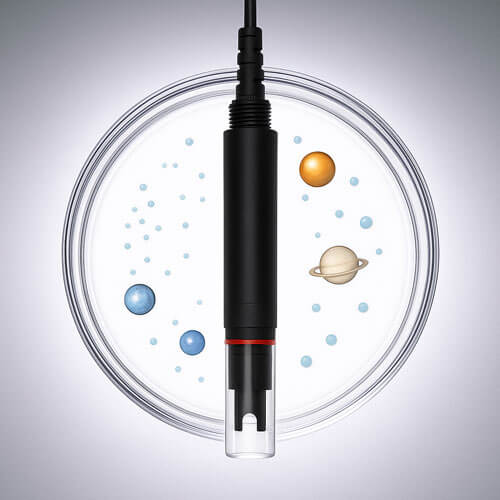 WWW.RENKEER.COMORP in WaterORP (Oxidation-Reduction Potential) indicates water’s ability to oxidize contaminants and reflects overall water quality and disinfection efficiency.0 Commenti 0 condivisioni 552 Views 0 Anteprima
WWW.RENKEER.COMORP in WaterORP (Oxidation-Reduction Potential) indicates water’s ability to oxidize contaminants and reflects overall water quality and disinfection efficiency.0 Commenti 0 condivisioni 552 Views 0 Anteprima -
IV. System Solutions: Long-Term Prevention and Control
Fresh Air Systems
Continuously exhausting indoor polluted air and introducing filtered fresh air, maintaining 24-hour air circulation, are currently recognized as the most effective long-term solution. They are particularly suitable for slow-release pollutants such as formaldehyde after renovation (which volatilizes for up to 15 years) and have become mandatory in Europe and the United States.
Advantages: Requires minimal frequent operation, can be integrated into smart home systems, and is suitable for all types of homes.
Air Purifiers
Combining negative ionization, ozone, activated carbon, and HEPA multi-layer filtration technology, they specifically address complex pollution and are suitable for immediate purification needs. However, regular filter replacement is required to maintain efficiency.
https://www.renkeer.com/indoor-air-quality/IV. System Solutions: Long-Term Prevention and Control Fresh Air Systems Continuously exhausting indoor polluted air and introducing filtered fresh air, maintaining 24-hour air circulation, are currently recognized as the most effective long-term solution. They are particularly suitable for slow-release pollutants such as formaldehyde after renovation (which volatilizes for up to 15 years) and have become mandatory in Europe and the United States. Advantages: Requires minimal frequent operation, can be integrated into smart home systems, and is suitable for all types of homes. Air Purifiers Combining negative ionization, ozone, activated carbon, and HEPA multi-layer filtration technology, they specifically address complex pollution and are suitable for immediate purification needs. However, regular filter replacement is required to maintain efficiency. https://www.renkeer.com/indoor-air-quality/ WWW.RENKEER.COMIndoor Air Quality Improving and TestingPoor indoor air quality can affect your health. Learn how to measure and reduce exposure to indoor pollutants and improve indoor air quality.0 Commenti 0 condivisioni 2K Views 0 Anteprima
WWW.RENKEER.COMIndoor Air Quality Improving and TestingPoor indoor air quality can affect your health. Learn how to measure and reduce exposure to indoor pollutants and improve indoor air quality.0 Commenti 0 condivisioni 2K Views 0 Anteprima -
Application of Heat Flux in Building Energy Efficiency
In the field of building energy efficiency, the application of heat flux is primarily reflected in the evaluation and optimization of building insulation performance. Heat flux meters, as a tool for measuring heat flux, play a crucial role in this process. The following are specific aspects of heat flux applications in building energy efficiency:
https://www.renkeer.com/what-is-heat-flux/Application of Heat Flux in Building Energy Efficiency In the field of building energy efficiency, the application of heat flux is primarily reflected in the evaluation and optimization of building insulation performance. Heat flux meters, as a tool for measuring heat flux, play a crucial role in this process. The following are specific aspects of heat flux applications in building energy efficiency: https://www.renkeer.com/what-is-heat-flux/ WWW.RENKEER.COMHeat Flux Definition, Types, and MeasurementHeat flux measures the rate of heat energy transfer per unit area, indicating heat flow intensity through materials or surfaces in watts per square meter(W/m²).0 Commenti 0 condivisioni 676 Views 0 Anteprima
WWW.RENKEER.COMHeat Flux Definition, Types, and MeasurementHeat flux measures the rate of heat energy transfer per unit area, indicating heat flow intensity through materials or surfaces in watts per square meter(W/m²).0 Commenti 0 condivisioni 676 Views 0 Anteprima -
The Core Value and Application Scenarios of Temperature and Vibration Sensors in Mechanical Manufacturing
Equipment Lifecycle Condition Monitoring and Fault Warning
Temperature and vibration sensors collect real-time temperature and vibration parameters of key equipment in mechanical manufacturing, providing data support for equipment lifecycle management.
Real-time Monitoring of Rotating Equipment: In rotating equipment such as motors, pumps, fans, bearings, and reducers, sensors can monitor parameters such as vibration velocity, displacement, and surface temperature. This allows for timely detection of abnormal vibration caused by wear, imbalance, or looseness, as well as overheating risks caused by excessive temperatures, effectively preventing sudden equipment downtime.
https://www.renkeer.com/product/industrial-vibration-sensor/The Core Value and Application Scenarios of Temperature and Vibration Sensors in Mechanical Manufacturing Equipment Lifecycle Condition Monitoring and Fault Warning Temperature and vibration sensors collect real-time temperature and vibration parameters of key equipment in mechanical manufacturing, providing data support for equipment lifecycle management. Real-time Monitoring of Rotating Equipment: In rotating equipment such as motors, pumps, fans, bearings, and reducers, sensors can monitor parameters such as vibration velocity, displacement, and surface temperature. This allows for timely detection of abnormal vibration caused by wear, imbalance, or looseness, as well as overheating risks caused by excessive temperatures, effectively preventing sudden equipment downtime. https://www.renkeer.com/product/industrial-vibration-sensor/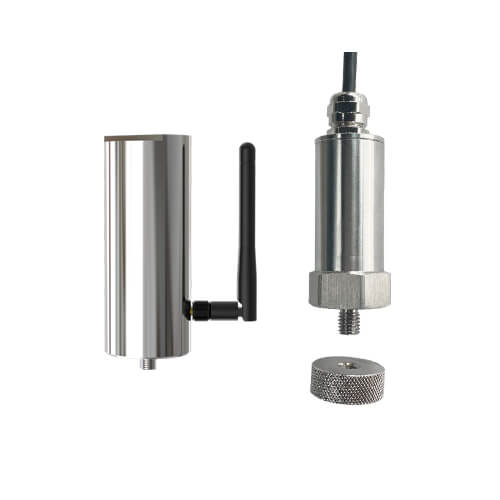 WWW.RENKEER.COMIndustrial Vibration SensorThe industrial vibration sensor can monitor the vibration amount and vibration frequency of mechanical equipment to check whether repair or maintenance is required.0 Commenti 0 condivisioni 723 Views 0 Anteprima
WWW.RENKEER.COMIndustrial Vibration SensorThe industrial vibration sensor can monitor the vibration amount and vibration frequency of mechanical equipment to check whether repair or maintenance is required.0 Commenti 0 condivisioni 723 Views 0 Anteprima -
The Importance of Turbidity Control in Water Treatment
Turbidity control is a crucial step in the water treatment process. Turbidity refers to the content of suspended particulate matter in water and the degree to which these particles scatter light. It is a key indicator of water clarity. The following are several important aspects of turbidity control in water treatment:
1. Ensuring Drinking Water Safety
High turbidity in water may contain bacteria, viruses, and other pathogens, and therefore serves as an indicator of hygiene and drinking water safety. Turbidity monitoring helps detect water quality issues early, allowing appropriate water treatment measures to be implemented and ensuring the safety and reliability of the water source.
https://www.renkeer.com/product/turbidity-sensor/The Importance of Turbidity Control in Water Treatment Turbidity control is a crucial step in the water treatment process. Turbidity refers to the content of suspended particulate matter in water and the degree to which these particles scatter light. It is a key indicator of water clarity. The following are several important aspects of turbidity control in water treatment: 1. Ensuring Drinking Water Safety High turbidity in water may contain bacteria, viruses, and other pathogens, and therefore serves as an indicator of hygiene and drinking water safety. Turbidity monitoring helps detect water quality issues early, allowing appropriate water treatment measures to be implemented and ensuring the safety and reliability of the water source. https://www.renkeer.com/product/turbidity-sensor/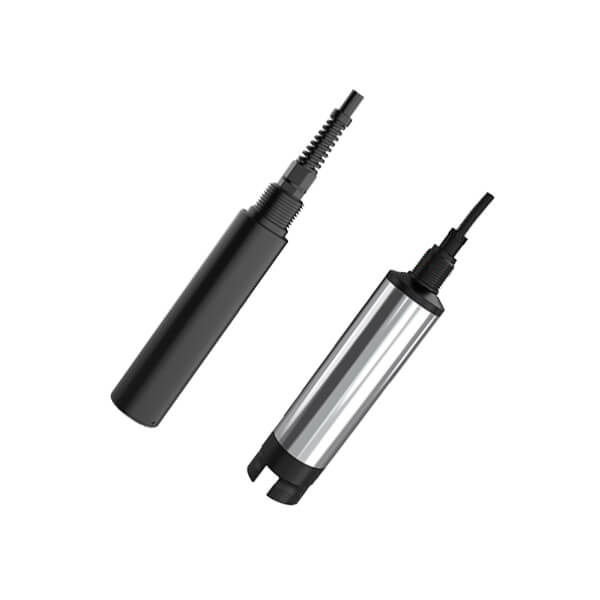 WWW.RENKEER.COMTurbidity SensorA turbidity sensor is a water quality sensor that monitors the turbidity of water online. It calculates the turbidity of a water sample by measuring the amount of light scattered by suspended solids in the water.0 Commenti 0 condivisioni 863 Views 0 Anteprima
WWW.RENKEER.COMTurbidity SensorA turbidity sensor is a water quality sensor that monitors the turbidity of water online. It calculates the turbidity of a water sample by measuring the amount of light scattered by suspended solids in the water.0 Commenti 0 condivisioni 863 Views 0 Anteprima -
Application Scenarios and Value of Capacitive Liquid Level Sensors in Agriculture
Capacitive liquid level sensors, with their high precision, low maintenance, and strong environmental adaptability, enable multi-dimensional optimization in agricultural production, from water resource management to crop cultivation. Their core function is to drive irrigation automation, intelligent equipment, and efficient resource utilization through real-time liquid level monitoring. The following are specific applications.
Core Applications in Smart Irrigation Systems
Agricultural irrigation is a typical application scenario for sensors. By accurately monitoring water levels and soil moisture, they enable "on-demand water supply," significantly improving water conservation and crop yields.
https://www.renkeer.com/product/capacitive-fuel-level-sensor/Application Scenarios and Value of Capacitive Liquid Level Sensors in Agriculture Capacitive liquid level sensors, with their high precision, low maintenance, and strong environmental adaptability, enable multi-dimensional optimization in agricultural production, from water resource management to crop cultivation. Their core function is to drive irrigation automation, intelligent equipment, and efficient resource utilization through real-time liquid level monitoring. The following are specific applications. Core Applications in Smart Irrigation Systems Agricultural irrigation is a typical application scenario for sensors. By accurately monitoring water levels and soil moisture, they enable "on-demand water supply," significantly improving water conservation and crop yields. https://www.renkeer.com/product/capacitive-fuel-level-sensor/ WWW.RENKEER.COMCapacitive Fuel Level SensorThe capacitive fuel level sensor uses the principle of radio frequency admittance to monitor the liquid level inside fuel tanks or water tanks.0 Commenti 0 condivisioni 1K Views 0 Anteprima
WWW.RENKEER.COMCapacitive Fuel Level SensorThe capacitive fuel level sensor uses the principle of radio frequency admittance to monitor the liquid level inside fuel tanks or water tanks.0 Commenti 0 condivisioni 1K Views 0 Anteprima -
Core application scenarios of gas sensors in the medical field
Gas sensors play a key role in the medical and health field by accurately detecting gas composition and concentration, covering multiple aspects such as environmental monitoring, disease diagnosis, and surgical safety, providing technical support for the construction of smart medical care.
Environmental and safety monitoring
Gas monitoring in medical places: Infrared gas sensors can detect the concentration of gases such as carbon dioxide, oxygen, and ammonia in wards and operating rooms in real time to ensure the safety of patients' breathing environment. For example, by monitoring the concentration of anesthetic gases in the operating room, medical staff and patients are prevented from being exposed to excessive anesthetics.
https://www.renkeer.com/gas-sensors/Core application scenarios of gas sensors in the medical field Gas sensors play a key role in the medical and health field by accurately detecting gas composition and concentration, covering multiple aspects such as environmental monitoring, disease diagnosis, and surgical safety, providing technical support for the construction of smart medical care. Environmental and safety monitoring Gas monitoring in medical places: Infrared gas sensors can detect the concentration of gases such as carbon dioxide, oxygen, and ammonia in wards and operating rooms in real time to ensure the safety of patients' breathing environment. For example, by monitoring the concentration of anesthetic gases in the operating room, medical staff and patients are prevented from being exposed to excessive anesthetics. https://www.renkeer.com/gas-sensors/Gas sensorsWe specialize in the production of portable gas detectors, fixed gas sensors, etc. for detect CO2, O2, CO, CH4, NH3, H2S, H2, formaldehyde, TVOC and others.0 Commenti 0 condivisioni 1K Views 0 Anteprima -
Pay attention to details in life: Avoid washing vegetables, fruits and other foods with water containing residual chlorine. There are some products on the market that remove residual chlorine installed on the shower head, which can be considered to reduce the harm of residual chlorine to the skin when bathing.
https://www.renkeer.com/product/residual-chlorine-meter/Pay attention to details in life: Avoid washing vegetables, fruits and other foods with water containing residual chlorine. There are some products on the market that remove residual chlorine installed on the shower head, which can be considered to reduce the harm of residual chlorine to the skin when bathing. https://www.renkeer.com/product/residual-chlorine-meter/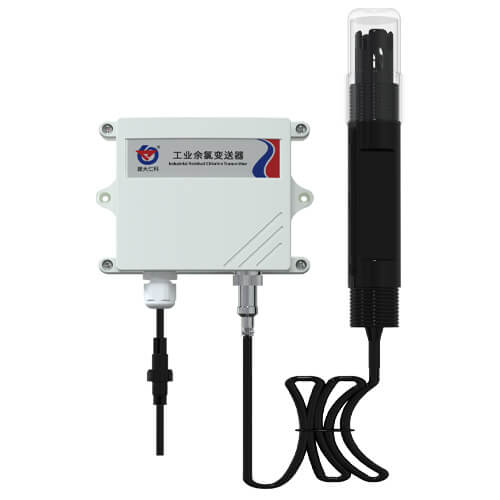 WWW.RENKEER.COMResidual Chlorine MeterThe chlorine meter is a device to measure the chloride ion content in salt and fresh water. It can be used with other meters for water quality monitoring.0 Commenti 0 condivisioni 633 Views 0 Anteprima
WWW.RENKEER.COMResidual Chlorine MeterThe chlorine meter is a device to measure the chloride ion content in salt and fresh water. It can be used with other meters for water quality monitoring.0 Commenti 0 condivisioni 633 Views 0 Anteprima -
Application of analog signals in modern communications
Basic fields of communication networks
Voice communication: In telephone networks, analog signals play a key role. By converting human voice into analog signals and transmitting them to the receiving end through transmission lines, real-time voice communication can be achieved. Although digital communication is now widely used in the voice field, analog voice communication is still used in some specific traditional communication systems or scenarios with extremely high real-time requirements, such as some internal communication systems, old fixed telephone lines, etc.
https://www.renkeer.com/analog-signal/Application of analog signals in modern communications Basic fields of communication networks Voice communication: In telephone networks, analog signals play a key role. By converting human voice into analog signals and transmitting them to the receiving end through transmission lines, real-time voice communication can be achieved. Although digital communication is now widely used in the voice field, analog voice communication is still used in some specific traditional communication systems or scenarios with extremely high real-time requirements, such as some internal communication systems, old fixed telephone lines, etc. https://www.renkeer.com/analog-signal/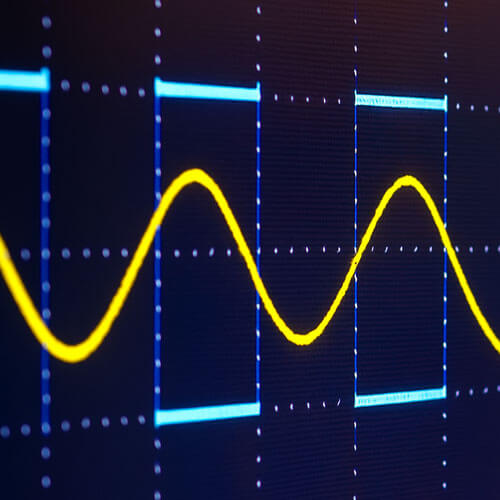 WWW.RENKEER.COMAnalog Signal: Definition, Difference and ApplicationsAnalog signal is a continuous electrical signal whose intensity and frequency change with time. It mainly includes two types: current output and voltage output.0 Commenti 0 condivisioni 670 Views 0 Anteprima
WWW.RENKEER.COMAnalog Signal: Definition, Difference and ApplicationsAnalog signal is a continuous electrical signal whose intensity and frequency change with time. It mainly includes two types: current output and voltage output.0 Commenti 0 condivisioni 670 Views 0 Anteprima -
The role of TOD in water quality monitoring
Reflecting the content of organic matter in water
Total oxygen demand (TOD) refers to the amount of oxygen required when the reducing substances in water are burned at high temperature to become stable oxides, and the result is measured in mg/L. The TOD value can reflect the amount of oxygen consumed when almost all organic matter in water (including carbon C, hydrogen H, oxygen O, nitrogen N, phosphorus P, sulfur S and other components) are burned to become CO₂, H₂O, NOₓ, SO₂, etc. It is closer to the theoretical oxygen demand value than biochemical oxygen demand (BOD), chemical oxygen demand (COD) and permanganate index, and can more comprehensively reflect the total amount of organic matter in water.
https://www.renkeer.com/what-is-cod-bod-toc-tod/The role of TOD in water quality monitoring Reflecting the content of organic matter in water Total oxygen demand (TOD) refers to the amount of oxygen required when the reducing substances in water are burned at high temperature to become stable oxides, and the result is measured in mg/L. The TOD value can reflect the amount of oxygen consumed when almost all organic matter in water (including carbon C, hydrogen H, oxygen O, nitrogen N, phosphorus P, sulfur S and other components) are burned to become CO₂, H₂O, NOₓ, SO₂, etc. It is closer to the theoretical oxygen demand value than biochemical oxygen demand (BOD), chemical oxygen demand (COD) and permanganate index, and can more comprehensively reflect the total amount of organic matter in water. https://www.renkeer.com/what-is-cod-bod-toc-tod/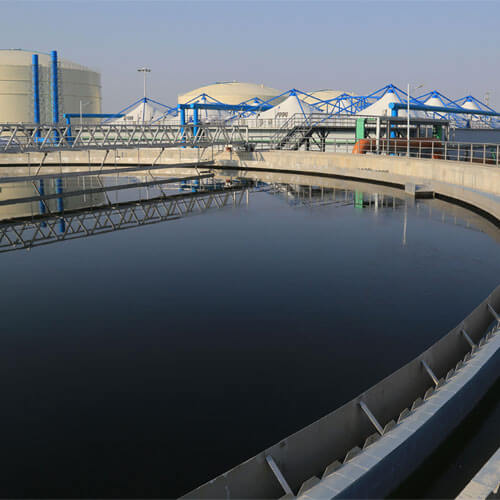 WWW.RENKEER.COMWastewater Monitoring: COD, BOD, TOC, TODCOD, BOD, TOC, and TOD are key indicators used to evaluate organic pollution levels in wastewater for treatment and environmental monitoring.0 Commenti 0 condivisioni 840 Views 0 Anteprima
WWW.RENKEER.COMWastewater Monitoring: COD, BOD, TOC, TODCOD, BOD, TOC, and TOD are key indicators used to evaluate organic pollution levels in wastewater for treatment and environmental monitoring.0 Commenti 0 condivisioni 840 Views 0 Anteprima -
Affecting biological behavior
Affecting navigation and foraging: Noise pollution affects the navigation and food-finding capabilities of marine organisms. During the oil pollution process, related operations may generate noise pollution. Dolphins and whales that rely on sound to identify directions and find food will become confused in a sea full of noise pollution. If they cannot find food, they will starve. If they cannot identify the direction, they may get lost in the vast ocean, and even die.
https://www.renkeer.com/product/oil-in-water-sensor/Affecting biological behavior Affecting navigation and foraging: Noise pollution affects the navigation and food-finding capabilities of marine organisms. During the oil pollution process, related operations may generate noise pollution. Dolphins and whales that rely on sound to identify directions and find food will become confused in a sea full of noise pollution. If they cannot find food, they will starve. If they cannot identify the direction, they may get lost in the vast ocean, and even die. https://www.renkeer.com/product/oil-in-water-sensor/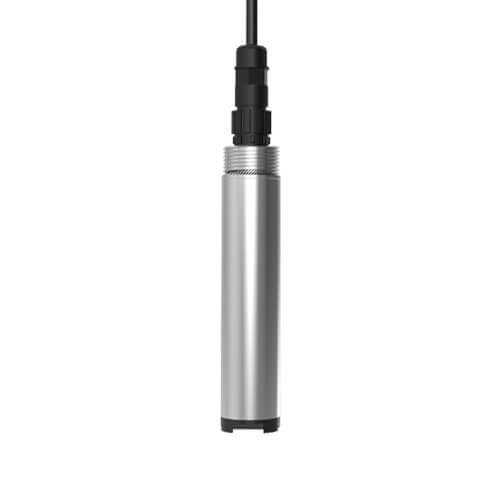 WWW.RENKEER.COMOil in Water SensorThe oil in water sensor uses the fluorescence principle to monitor the content of oil in water and provide data support for the degree of water pollution.0 Commenti 0 condivisioni 828 Views 0 Anteprima
WWW.RENKEER.COMOil in Water SensorThe oil in water sensor uses the fluorescence principle to monitor the content of oil in water and provide data support for the degree of water pollution.0 Commenti 0 condivisioni 828 Views 0 Anteprima -
Application of temperature and humidity recorder in drug transportationSolve existing problems in drug transportation During drug transportation, if there is a lack of effective temperature and humidity management, it is easy to cause major personal accidents and economic losses. At present, there are problems with lagging technical means in the cold chain logistics management of drugs in my country, such as manual measurement and paper records, no unified data...0 Commenti 0 condivisioni 2K Views 0 Anteprima
-
Types of environmental monitoring
Environmental monitoring is a process of systematically testing and evaluating various environmental factors, aiming to evaluate environmental quality, pollution level and changing trends, and provide a scientific basis for environmental management and decision-making. According to different classification standards, environmental monitoring can be divided into many types.
Division by region
Plant monitoring: mainly refers to the monitoring of internal pollution sources and total emission outlets by enterprises and institutions. The monitoring stations set up by each unit are mainly engaged in this part of the work.
Regional monitoring: refers to the monitoring of urban water bodies, atmosphere, sea areas, river basins, scenic areas and tourist areas by environmental protection departments across the country or a certain region.
Division by nature
Surveillance monitoring: According to the pee-arranged network points, it takes a long time to collect data for monitoring, which is mainly used to grasp the status and changing trends of environmental quality.
Research monitoring: Through monitoring, understand the pollution mechanism, clarify the migration and change laws of pollutants, and study the degree of environmental pollution.
Specific purpose monitoring: Monitor specific environmental problems or pollution sources to evaluate and control their impact on the environment, such as offshore oil tanker pollution accidents and pollution incidents caused by factory production failures.
Classification by object
Atmospheric monitoring: monitor the concentration of pollutants such as particulate matter, sulfur dioxide, nitrogen oxides, ozone, volatile organic compounds, etc. in the air.
Water quality monitoring: monitor the concentration of various pollutants in the water, including harmful substances, heavy metals, sources of pollutants, organic matter, etc.
Noise monitoring: monitor the intensity, frequency, duration and other information of noise to ensure noise control within various regulations and standards.
Soil monitoring: monitor various harmful pollutants in the soil to improve the utilization value of land resources.
Electromagnetic radiation monitoring: monitor the intensity of the radiation field to ensure that the radiation field will not cause harm to the human body and the natural environment.
Meteorological environment monitoring: monitor various meteorological parameters, such as temperature, wind speed, humidity, etc., to provide accurate meteorological data and related warnings.
Other categories
Environmental quality monitoring: monitor conventional indicators in the environment to grasp the status and changing trends of environmental quality.
Pollution source monitoring: monitor specific pollution sources to evaluate and control their impact on the environment.
The above are the main types of environmental monitoring. Each type of monitoring has its specific purpose and methods, which together constitute a comprehensive environmental monitoring system.
https://www.renkeer.com/environmental-monitoring-types-and-systems/
Types of environmental monitoring Environmental monitoring is a process of systematically testing and evaluating various environmental factors, aiming to evaluate environmental quality, pollution level and changing trends, and provide a scientific basis for environmental management and decision-making. According to different classification standards, environmental monitoring can be divided into many types. Division by region Plant monitoring: mainly refers to the monitoring of internal pollution sources and total emission outlets by enterprises and institutions. The monitoring stations set up by each unit are mainly engaged in this part of the work. Regional monitoring: refers to the monitoring of urban water bodies, atmosphere, sea areas, river basins, scenic areas and tourist areas by environmental protection departments across the country or a certain region. Division by nature Surveillance monitoring: According to the pee-arranged network points, it takes a long time to collect data for monitoring, which is mainly used to grasp the status and changing trends of environmental quality. Research monitoring: Through monitoring, understand the pollution mechanism, clarify the migration and change laws of pollutants, and study the degree of environmental pollution. Specific purpose monitoring: Monitor specific environmental problems or pollution sources to evaluate and control their impact on the environment, such as offshore oil tanker pollution accidents and pollution incidents caused by factory production failures. Classification by object Atmospheric monitoring: monitor the concentration of pollutants such as particulate matter, sulfur dioxide, nitrogen oxides, ozone, volatile organic compounds, etc. in the air. Water quality monitoring: monitor the concentration of various pollutants in the water, including harmful substances, heavy metals, sources of pollutants, organic matter, etc. Noise monitoring: monitor the intensity, frequency, duration and other information of noise to ensure noise control within various regulations and standards. Soil monitoring: monitor various harmful pollutants in the soil to improve the utilization value of land resources. Electromagnetic radiation monitoring: monitor the intensity of the radiation field to ensure that the radiation field will not cause harm to the human body and the natural environment. Meteorological environment monitoring: monitor various meteorological parameters, such as temperature, wind speed, humidity, etc., to provide accurate meteorological data and related warnings. Other categories Environmental quality monitoring: monitor conventional indicators in the environment to grasp the status and changing trends of environmental quality. Pollution source monitoring: monitor specific pollution sources to evaluate and control their impact on the environment. The above are the main types of environmental monitoring. Each type of monitoring has its specific purpose and methods, which together constitute a comprehensive environmental monitoring system. https://www.renkeer.com/environmental-monitoring-types-and-systems/ WWW.RENKEER.COMEnvironmental Monitoring Types and SystemsEnvironmental monitoring uses sensors and IoT to collect various indicators that affect environmental. Includes air, water, soil, noise and biodiversity.0 Commenti 0 condivisioni 2K Views 0 Anteprima
WWW.RENKEER.COMEnvironmental Monitoring Types and SystemsEnvironmental monitoring uses sensors and IoT to collect various indicators that affect environmental. Includes air, water, soil, noise and biodiversity.0 Commenti 0 condivisioni 2K Views 0 Anteprima -
Importance of smoke alarms in industrial sites
Ensure the safety of life
In industrial sites, there are many fire hazards due to the complexity of production activities. Smoke alarms can sound an alarm when the smoke concentration in the air reaches a certain threshold at the initial stage of a fire, reminding staff to promptly discover the fire, respond quickly, and take correct escape measures to buy precious time for personnel evacuation, thereby minimizing casualties caused by the fire.
Reduce property losses
Industrial sites usually have a large number of equipment, raw materials and finished products. Once a fire occurs, the loss is huge. When the smoke alarm detects smoke, it will sound an alarm and activate linkage devices, such as closing the gas valve and starting the smoke exhaust system, to prevent the fire from spreading. Timely warnings and linkage measures can effectively control the fire and reduce property losses caused by the fire.
Comply with regulatory requirements
Governments and regional regulatory agencies are paying more and more attention to fire safety in industrial sites. Many places have relevant regulations requiring the installation of fire safety equipment such as smoke alarms in industrial sites. Installing smoke alarms is a necessary measure for industrial enterprises to comply with fire safety regulations and avoid penalties for violating regulations.
Maintaining the continuity of production
Industrial production is often a continuous process. A fire may cause production interruption, affecting order delivery and corporate reputation. The timely warning of smoke alarms can enable enterprises to take measures to control the fire in the early stage of the fire, reduce the damage of the fire to production equipment and production processes, help maintain the continuity of production, and ensure the normal operation of the enterprise.
Enhance the safety image of the enterprise
Installing advanced fire safety equipment such as smoke alarms reflects the company's attention to the safety of employees' lives and property, helps to enhance the company's safety image among employees, customers and the public, enhances the company's social responsibility and credibility, and has positive significance for the long-term development of the company.
https://www.renkeer.com/smoke-detector-types/
Importance of smoke alarms in industrial sites Ensure the safety of life In industrial sites, there are many fire hazards due to the complexity of production activities. Smoke alarms can sound an alarm when the smoke concentration in the air reaches a certain threshold at the initial stage of a fire, reminding staff to promptly discover the fire, respond quickly, and take correct escape measures to buy precious time for personnel evacuation, thereby minimizing casualties caused by the fire. Reduce property losses Industrial sites usually have a large number of equipment, raw materials and finished products. Once a fire occurs, the loss is huge. When the smoke alarm detects smoke, it will sound an alarm and activate linkage devices, such as closing the gas valve and starting the smoke exhaust system, to prevent the fire from spreading. Timely warnings and linkage measures can effectively control the fire and reduce property losses caused by the fire. Comply with regulatory requirements Governments and regional regulatory agencies are paying more and more attention to fire safety in industrial sites. Many places have relevant regulations requiring the installation of fire safety equipment such as smoke alarms in industrial sites. Installing smoke alarms is a necessary measure for industrial enterprises to comply with fire safety regulations and avoid penalties for violating regulations. Maintaining the continuity of production Industrial production is often a continuous process. A fire may cause production interruption, affecting order delivery and corporate reputation. The timely warning of smoke alarms can enable enterprises to take measures to control the fire in the early stage of the fire, reduce the damage of the fire to production equipment and production processes, help maintain the continuity of production, and ensure the normal operation of the enterprise. Enhance the safety image of the enterprise Installing advanced fire safety equipment such as smoke alarms reflects the company's attention to the safety of employees' lives and property, helps to enhance the company's safety image among employees, customers and the public, enhances the company's social responsibility and credibility, and has positive significance for the long-term development of the company. https://www.renkeer.com/smoke-detector-types/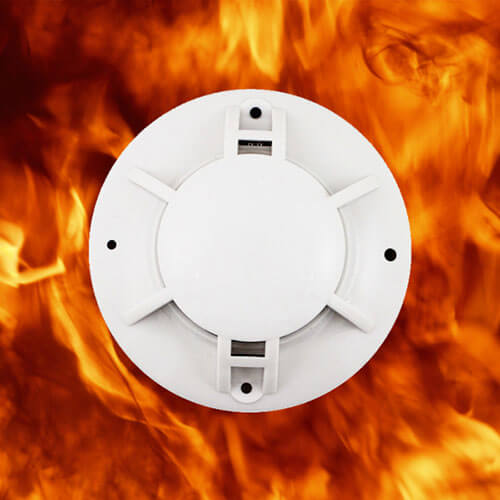 WWW.RENKEER.COMWhat Are The Types Of Smoke Detector?In this era of frequent fires, the invention of the smoke detector is undoubtedly great, it can save thousands of lives every year.0 Commenti 0 condivisioni 1K Views 0 Anteprima
WWW.RENKEER.COMWhat Are The Types Of Smoke Detector?In this era of frequent fires, the invention of the smoke detector is undoubtedly great, it can save thousands of lives every year.0 Commenti 0 condivisioni 1K Views 0 Anteprima -
The role of turbidity sensors in environmental monitoring
Provide key data for water quality assessment
Turbidity is an important parameter for measuring the clarity of water and the concentration of possible suspended pollutants. Turbidity sensors can accurately measure this indicator, providing a key basis for accurately assessing water quality. It can measure the turbidity value in water bodies such as pipes, rivers, and lakes, reflecting the content of impurities such as suspended matter, colloids, and microorganisms in the water, so that environmental protection personnel can clearly understand the degree of pollution and water quality changes in the water.
Timely warning of water quality deterioration
In the water environment monitoring work of the environmental protection department, turbidity sensors can promptly detect water turbidity problems caused by sediment, microorganisms, organic matter or inorganic particles. When the turbidity of the water body increases abnormally, it means that there may be a deterioration in water quality. It can quickly issue an early warning to remind relevant departments to take measures to prevent further pollution of water sources, ensure drinking water safety, and maintain the health and stability of aquatic ecosystems.
Assist in water resource management decision-making
The turbidity sensor is used in conjunction with a water quality monitoring station to achieve continuous online monitoring. The data can also be uploaded to the cloud platform in real time and combined with advanced technologies such as big data. By analyzing a large amount of turbidity data, it is possible to reveal the dynamic trend of regional water quality conditions, provide a scientific basis for water resource management decisions, help formulate reasonable and effective water resource protection measures, and warn and control potential environmental pollution problems.
Application in sewage treatment process monitoring
Turbidity is an important control parameter in the sewage treatment process. Turbidity sensors can monitor the turbidity of sewage in real time to help understand the effect of sewage treatment, so as to adjust the treatment process in time to ensure that sewage treatment achieves the expected effect, so that the discharged water quality meets environmental protection standards and reduces pollution to the environment.
Monitoring the concentration of microscopic particles in the air
In addition to water body monitoring, turbidity sensors can also be used to monitor the concentration of microscopic particles such as dust and smoke in the air, provide data support for atmospheric environmental pollution control, and assist environmental protection work from a broader environmental monitoring perspective.
https://www.renkeer.com/what-and-how-choose-turbidity-sensor/
The role of turbidity sensors in environmental monitoring Provide key data for water quality assessment Turbidity is an important parameter for measuring the clarity of water and the concentration of possible suspended pollutants. Turbidity sensors can accurately measure this indicator, providing a key basis for accurately assessing water quality. It can measure the turbidity value in water bodies such as pipes, rivers, and lakes, reflecting the content of impurities such as suspended matter, colloids, and microorganisms in the water, so that environmental protection personnel can clearly understand the degree of pollution and water quality changes in the water. Timely warning of water quality deterioration In the water environment monitoring work of the environmental protection department, turbidity sensors can promptly detect water turbidity problems caused by sediment, microorganisms, organic matter or inorganic particles. When the turbidity of the water body increases abnormally, it means that there may be a deterioration in water quality. It can quickly issue an early warning to remind relevant departments to take measures to prevent further pollution of water sources, ensure drinking water safety, and maintain the health and stability of aquatic ecosystems. Assist in water resource management decision-making The turbidity sensor is used in conjunction with a water quality monitoring station to achieve continuous online monitoring. The data can also be uploaded to the cloud platform in real time and combined with advanced technologies such as big data. By analyzing a large amount of turbidity data, it is possible to reveal the dynamic trend of regional water quality conditions, provide a scientific basis for water resource management decisions, help formulate reasonable and effective water resource protection measures, and warn and control potential environmental pollution problems. Application in sewage treatment process monitoring Turbidity is an important control parameter in the sewage treatment process. Turbidity sensors can monitor the turbidity of sewage in real time to help understand the effect of sewage treatment, so as to adjust the treatment process in time to ensure that sewage treatment achieves the expected effect, so that the discharged water quality meets environmental protection standards and reduces pollution to the environment. Monitoring the concentration of microscopic particles in the air In addition to water body monitoring, turbidity sensors can also be used to monitor the concentration of microscopic particles such as dust and smoke in the air, provide data support for atmospheric environmental pollution control, and assist environmental protection work from a broader environmental monitoring perspective. https://www.renkeer.com/what-and-how-choose-turbidity-sensor/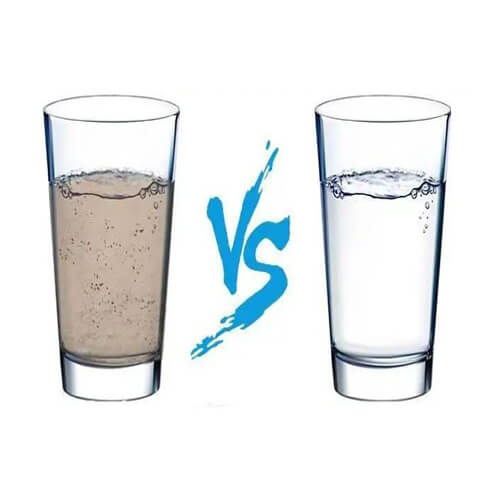 WWW.RENKEER.COMWhat Is a Turbidity Sensor? How to Choose?Turbidity is important for water quality, and the turbidity in the solution can be monitored by a turbidity sensor. There are three types of turbidity sensors.0 Commenti 0 condivisioni 2K Views 0 Anteprima
WWW.RENKEER.COMWhat Is a Turbidity Sensor? How to Choose?Turbidity is important for water quality, and the turbidity in the solution can be monitored by a turbidity sensor. There are three types of turbidity sensors.0 Commenti 0 condivisioni 2K Views 0 Anteprima
Altre storie
Sponsorizzato



